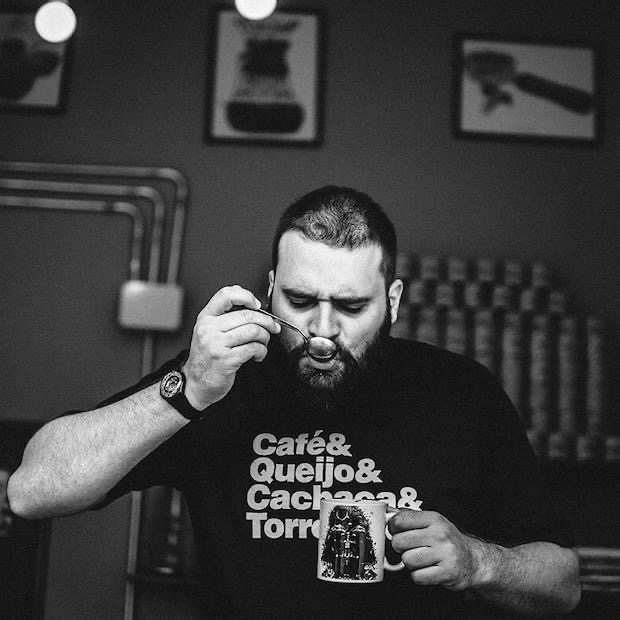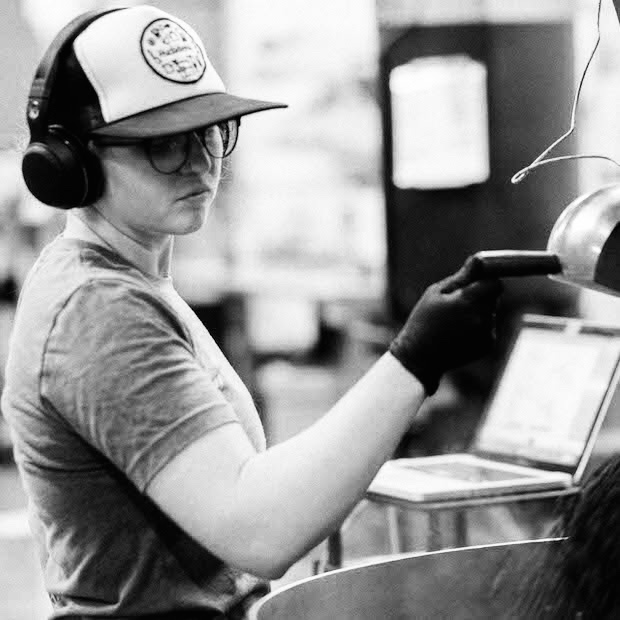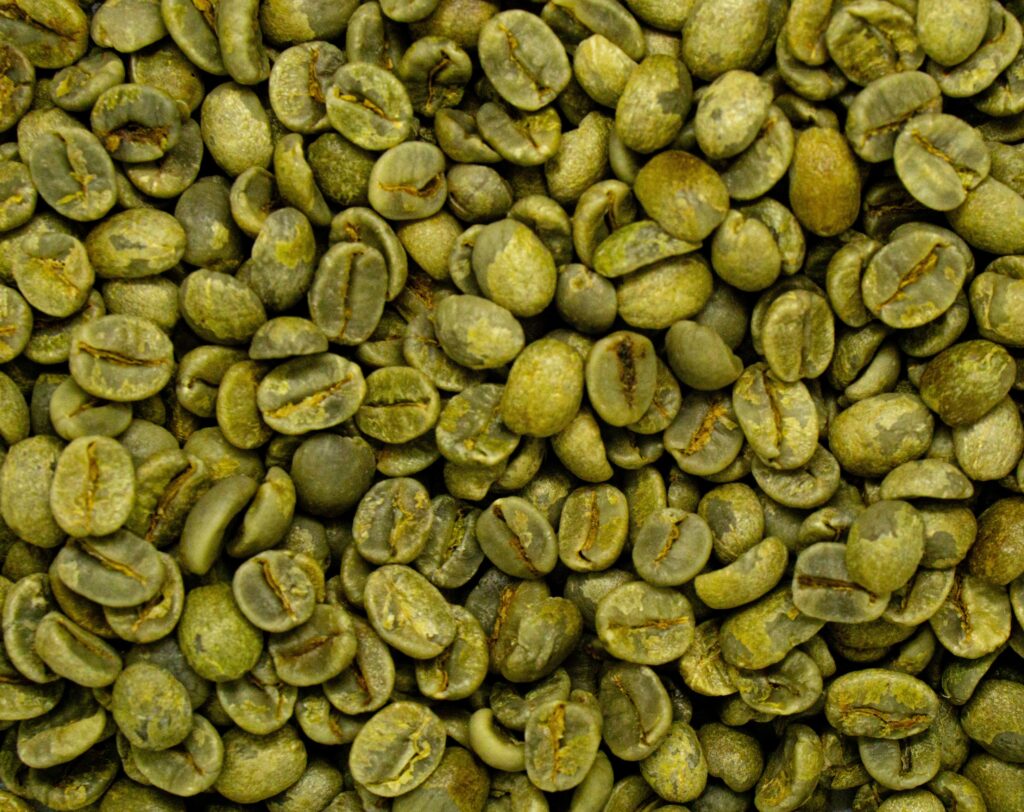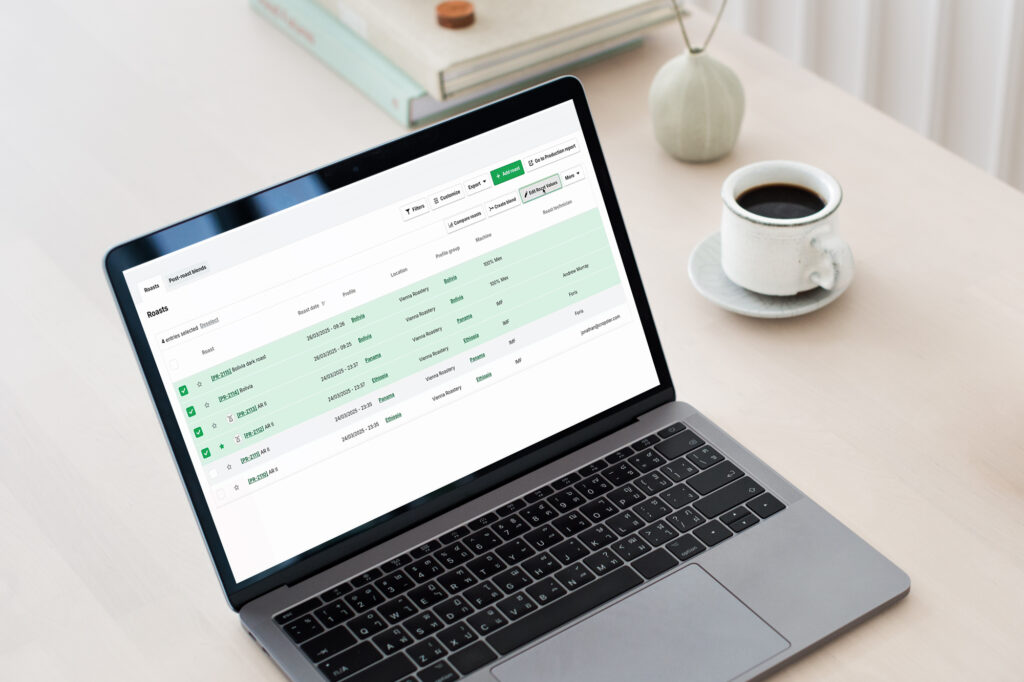Roasting Origins: 6 roasters on how to roast a Brazilian coffee (with roast curves)
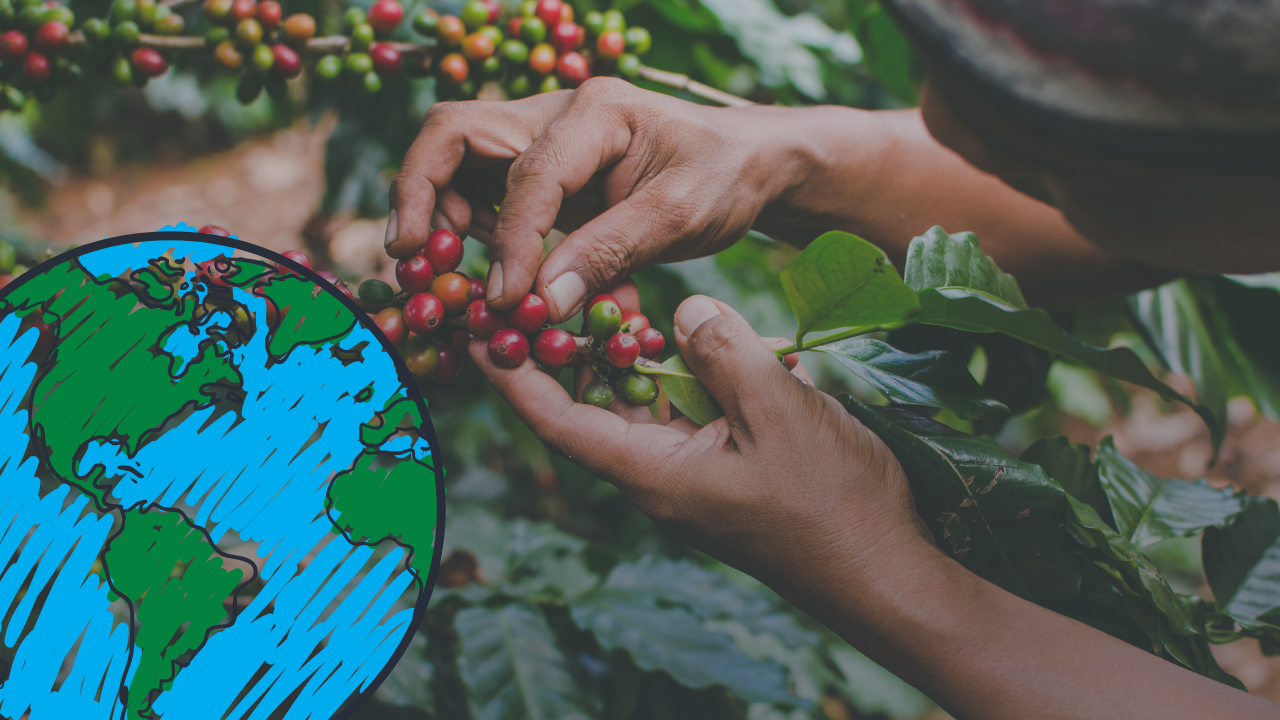
| Origin
We sent each roaster the same coffee, a Red Obata Natural from Fazenda Minamihara, and asked them to approach the coffee in the same way they would any other new coffee that shows up to their roastery, and to then record their process and findings. We wanted to learn how roasters approach a new coffee and determine their goals for its flavor profile based on their markets.
Together with Ally Coffee we teamed up to create an amazing virtual webinar to analyze the roast curves, check out the participants cupping notes and learn what flavors in the coffee they tried to highlight. You can either watch the full webinar “Roasting Origins: Brazil Edition” for detailed insights or keep reading to find out about our findings.
We know there is no precise answer to the question “What is the best way to roast a Brazilian coffee?” Instead our goal was to share with you the process step by step these roasters from different countries, at different elevations, across different climates, with different coffee roasting equipment, and different markets took to achieve their goals. It was nearly guaranteed that each roaster would record different findings for each stage of the roast process from drying phase to color change to first crack and development time, etc., but learning how roasters approach their new coffees and in particular Brazils and being able to see their Cropster data throughout the process is something we know many can learn from.
Let’s meet the roasters and see how they approached this Brazilian coffee:
- Pat Connolly | Genovese | Australia
- Mohammad Almarhoon | Artist Hub | United Arab Emirates
- Hugo Rocco | Moka Clube | Brazil
- Shelby Williamson | Huckleberry Roaster | USA
- Garreth Druce | The Barn | Germany
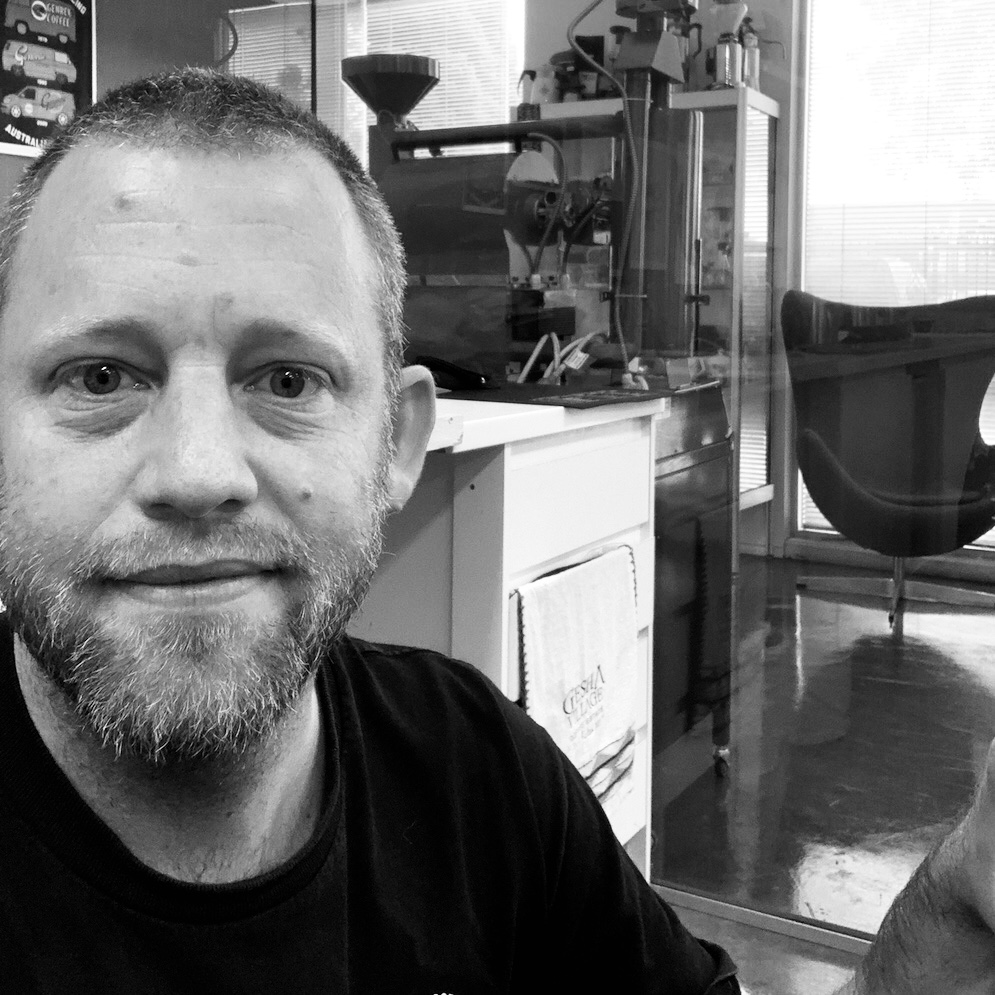
Roasting Expert: Pat Connolly
Company: Genovese
Country: Australia
Roasting Machine: 5kg STA Impianti
- What was your goal with this coffee?
“This coffee was more fruity than a standard Brazilian coffee. In the past three to five years there have been more Brazilian producers who experiment and become more meticulous with their processing and drying that brings a higher complexity to their coffee.” Pat’s team has bought quite a few coffees that “from a cupping perspective you wouldn’t necessarily think they’re Brazilian.” So for this coffee he wanted to keep his roast approach similar to a “light espresso roast” with the aim of pulling a higher yield shot in the end to keep the acid and fruit in the coffee.
- What was your roasting process?
Pat noted that with lower moisture coffees you have to be careful in how you approach the end because you can destroy the delicate notes. He made a note at the very end of the roast to avoid an ROR flick that could have given him an undesired bitterness while still letting the coffee develop, so you’ll notice how his environmental temperature at the end of the roast dips to help with that.
- How would you serve this coffee?
“I wouldn’t want to blend this with anything to mute those stone fruit notes and higher complexity in cup.”
Coffee roasting temperature chart (roast profile) for a Brazilian coffee from Pat Connolly at Genovese:

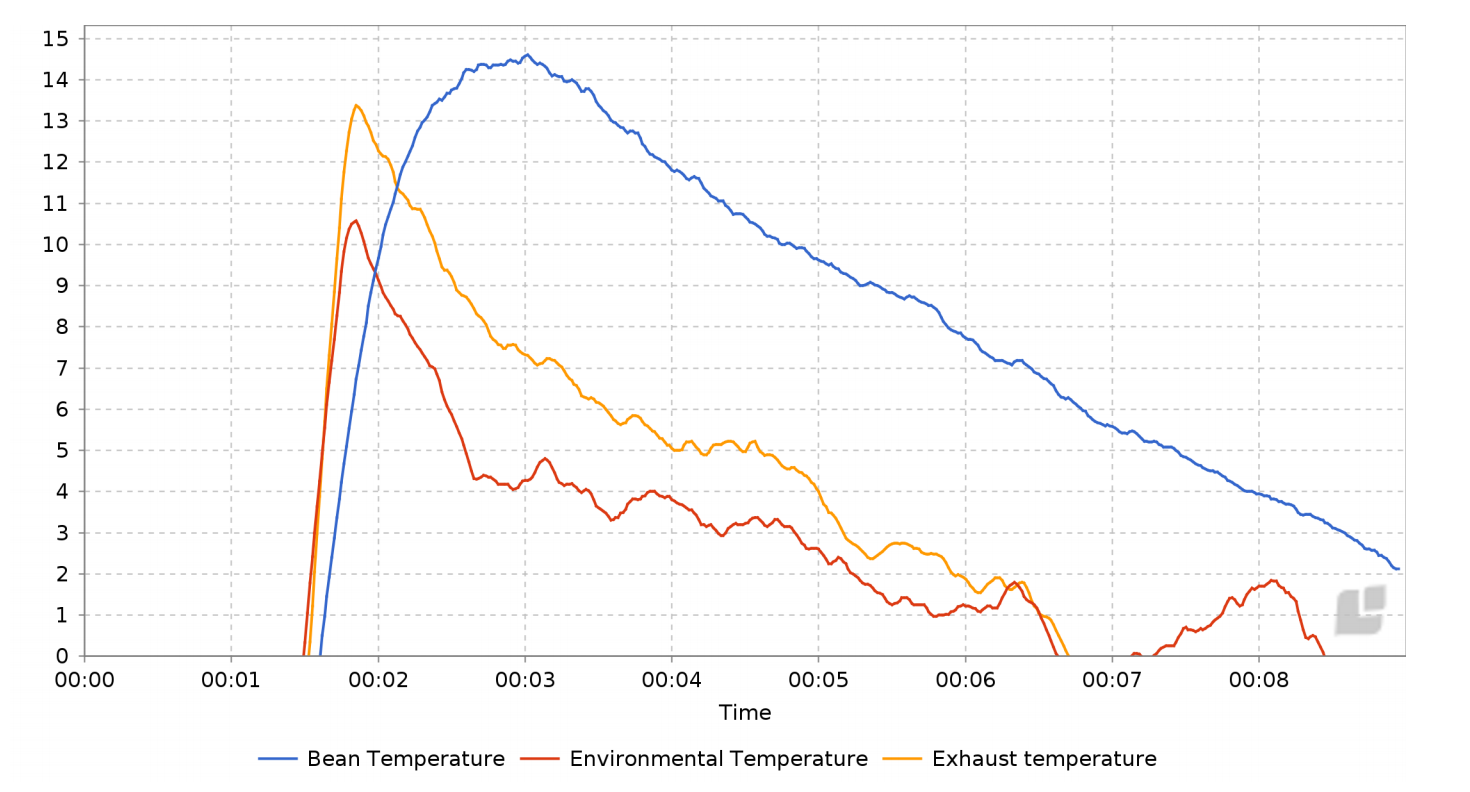
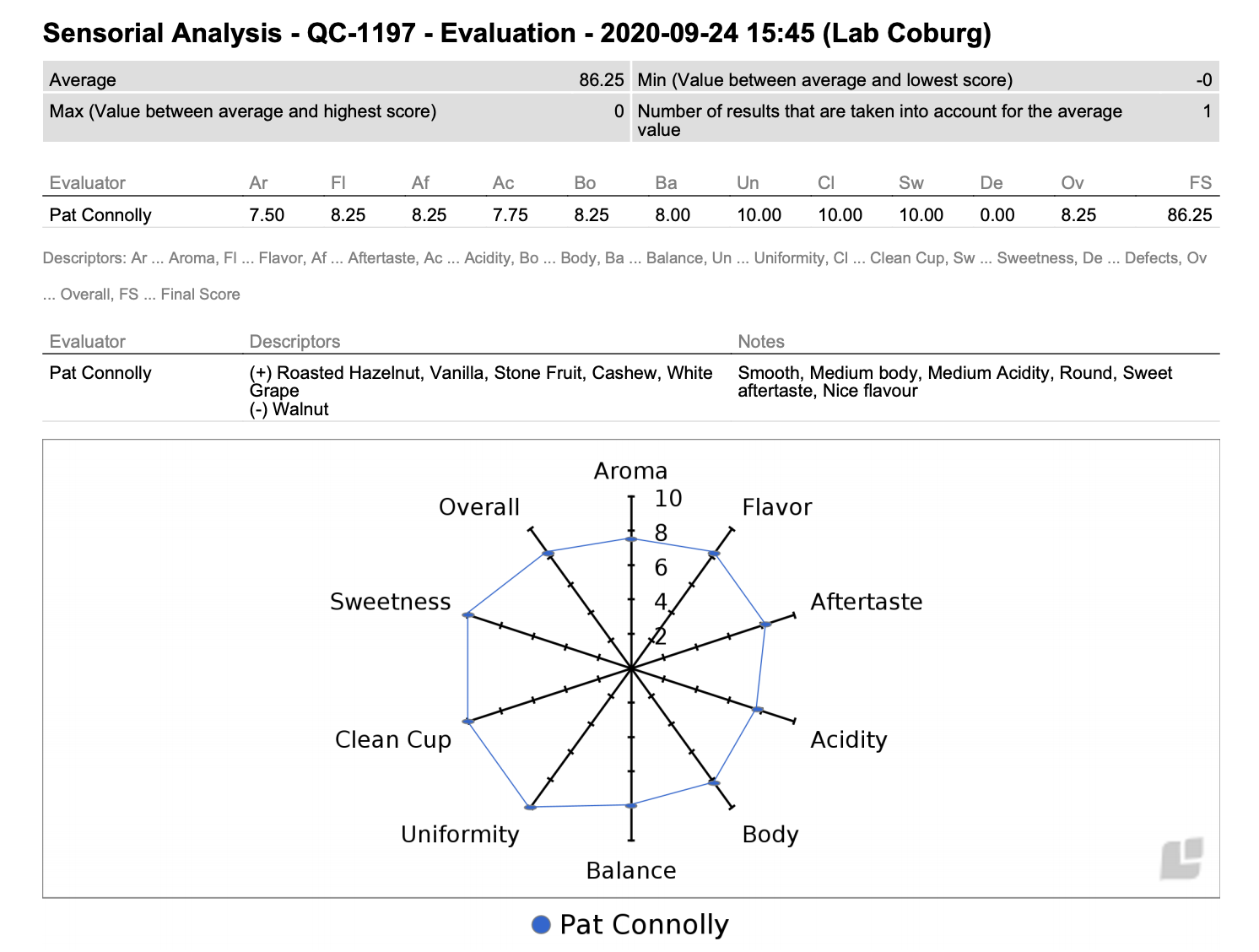
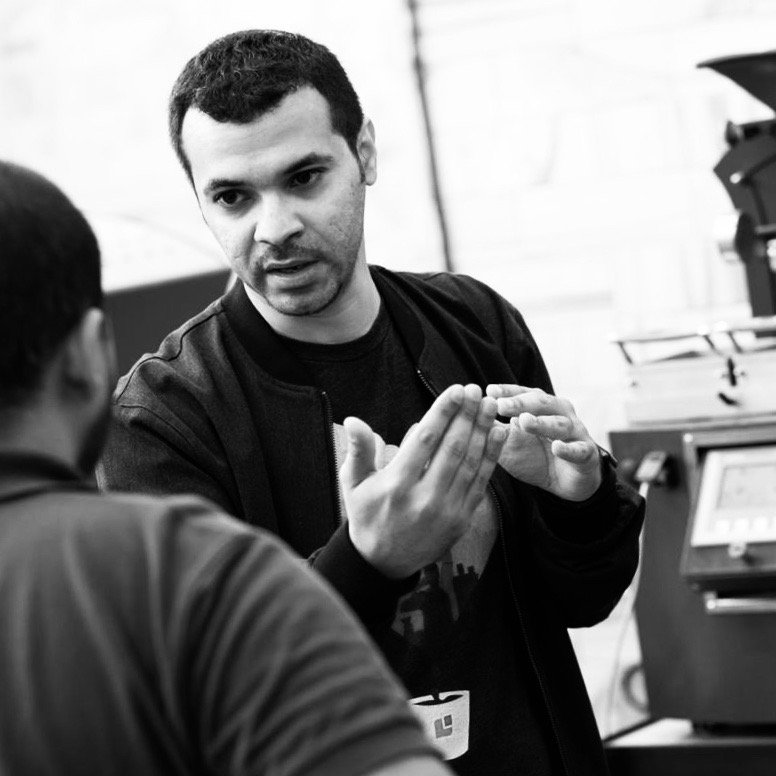
Roasting Expert: Mohammad Almarhoon
Company: Artist Hub
Country: United Arab Emirates
Roasting Machine: Giesen WPG1
- What was your goal with this coffee?
What Mohammad discovered with this coffee was “that I needed a shorter maillard reaction because of the low moisture. The moisture was about eight percent so I tried to lower the time of the maillard reaction as much as possible to give enough time for the development later on.” He also added that “the flicking during the first crack was very tricky and it was really hard to get around that. I used the environmental or exhaust temperature to precisely control the bean temperature – that’s the best way to do it on this machine.”
- What was your roasting process?
“What we usually do for profiling is try to get different timings like a slow and fast roast and another roast in the middle. This was the fastest roast among the three and this is the one that we liked when we cupped it.”
- How would you serve this coffee?
“As Pat said, in the past two years everything has been changing and Brazil has been providing extremely good coffees in a different way. Though I tried some nice Brazilian coffee in the past year, this was very impressive for me.” Mohammad added that “the wide spectrum of flavors and notes” was what impressed him the most and that’s the reason he would not add it to a blend. “It has enough flavors that you want to experience and enjoy it on its own. There’s no need to put another original with this kind of coffee. The notes I got were stone fruit, peach and there is also hot caramel and it reminded me of the Kenyan coffee overall when it was warm and then when it cools down you get all these nice other flavors and the most shocking for me was the floral notes I did not expect. If we give this coffee to the community here I think they will change their mind about the Brazilian coffee.”
Coffee roasting temperature chart (roast profile) for a Brazilian coffee from Mohammad Almarhoon at Artist Hub:



Roasting Expert: Hugo Rocco
Company: Moka Clube
Country: Brazil
Roasting Machine: Atila 15kg
- What was your goal with this coffee?
“In Brazil we consider this a high-density coffee. I don’t know if everybody knows but we cannot import different coffees from abroad so we just roast Brazilian coffee. So this is a kind of coffee that Brazilians don’t know.” Hugo points out that he was aiming to bring out the floral notes in this coffee by maintaining its clarity and not going too far into development.
- What was your roasting process?
“I’ve known the producer for the last four years, and in the last three years I’ve been roasting his coffee. I have a big roaster Atila that is 15 kilos, so I just had one chance with six kilos we were given, so I just roasted this coffee the way I was used to with this coffee. My aim was to release the floral and all these delicate notes, which is why I had a shorter development percentage.” He pointed out that the other guys all roasted like 19 percent at the end, but he just roasted after crack 10 percent.
Coffee roasting temperature chart (roast profile) for a Brazilian coffee from Hugo Rocco at Moka Clube:
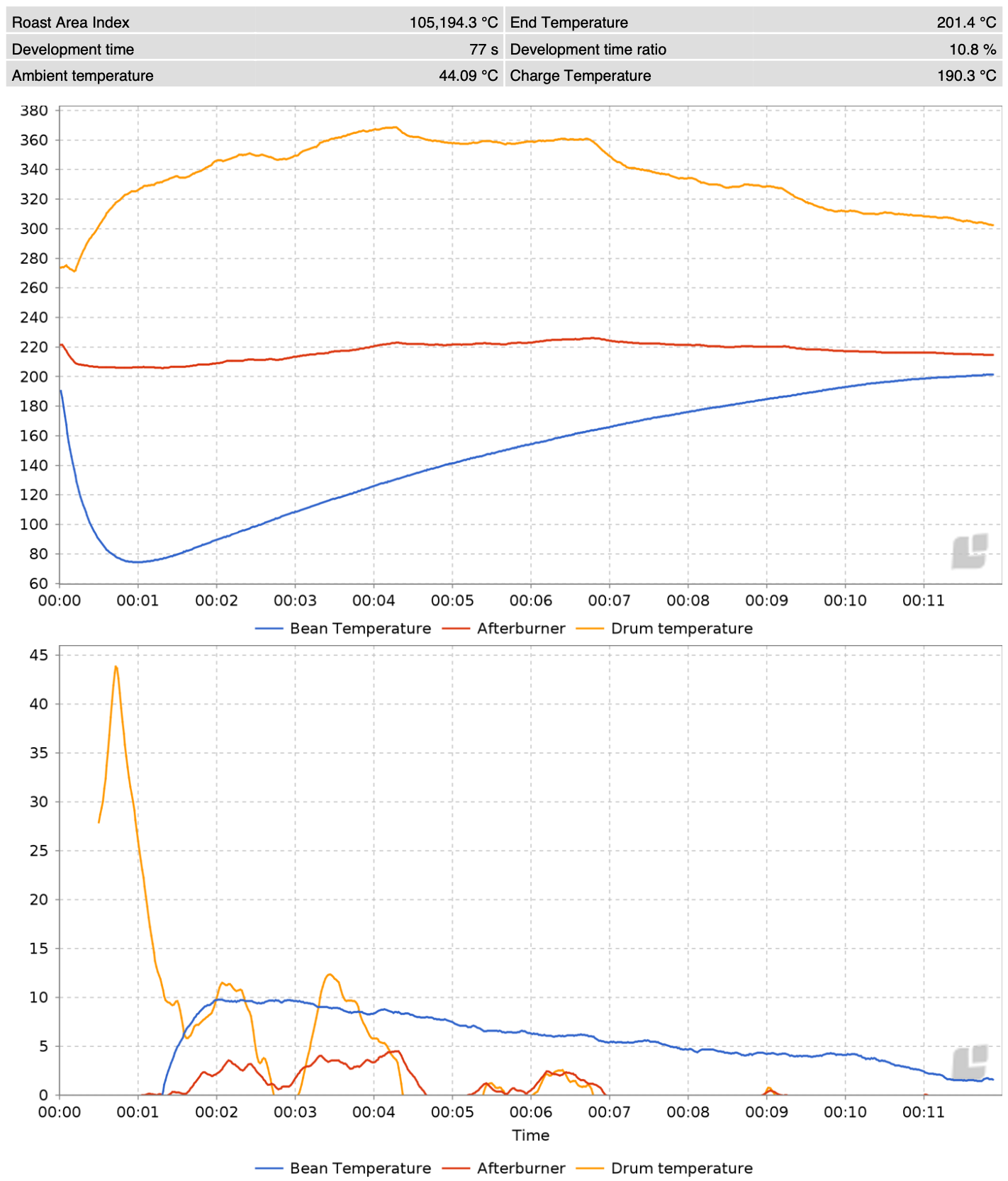

Roasting Expert: Shelby Williamson
Company: Huckleberry Roasters
Country: USA
Roasting Machine: Giesen W15
- What was your goal with this coffee?
“This particular profile was done in a Giesen 15 kilos so I was severely underweight and that’s why it was so fast. Originally I had taken the coffee and I had put it in my sample roaster. I did three separate roasts of three varying degrees of development. That’s typically what I do when we get a new coffee that i’m not really sure of.” Shelby said that she agrees with Ricardo “that this is definitely a higher density Brazilian, but overall pretty soft coffee. It was pretty easy to manipulate in the roaster.” What she found with the sample roast was: “the lightest one definitely had those really underdeveloped nutty characteristics and almost had like a herbaceousness. So I really wanted to avoid under-developing this but I also found that my longer a little more developed roast had this chalky quality to it and so I figured out this isn’t necessarily going to be an espresso style roast. I was going to roast it a little more like a single origin.”
- What was your roasting process?
“There’s only about a minute and a half of development on it – it’s at about 16 percent and I think it’s under nine minutes so it’s a pretty fast roast. I actually had to turn the gas on a little more at the end to get it to kind of push so it didn’t totally stall out on me, but I was really pleasantly surprised with the fruit notes that were coming out of this coffee. The most fruit that you often get out of Brazilian coffee is more a raisin quality to it which is still nice and sweet but this one had a little more like clementine and cranberry and just had some really soft fruit tones that matched really well with the chocolate.”
- How would you serve this coffee?
As far as how Shelby would use this coffee, she said: “it would really depend on what the price was like. If this was a decently priced coffee, it could be something that you could use both in a blend and a single origin and kind of be your saving grace if we just bought a lot of this coffee and we use it for multiple purposes roasting it in different ways. Because there is so much chocolate in this coffee I think that it would make a really great espresso and a good base for a blend overall if you developed it a little more.” However, she added that “the fruit tones in it are bright and sweet enough that I think any single origin coffee drinker would be happy with this coffee. That being said, I definitely don’t think it’s as wild or crazy as a bright fruity ethiopian. It is a really nice fruity, mellow Brazilian with good acidity. Overall I think that this was a fairly balanced coffee.”
Coffee roasting temperature chart (roast profile) for a Brazilian coffee from Shelby Williamson at Huckleberry Roasters:
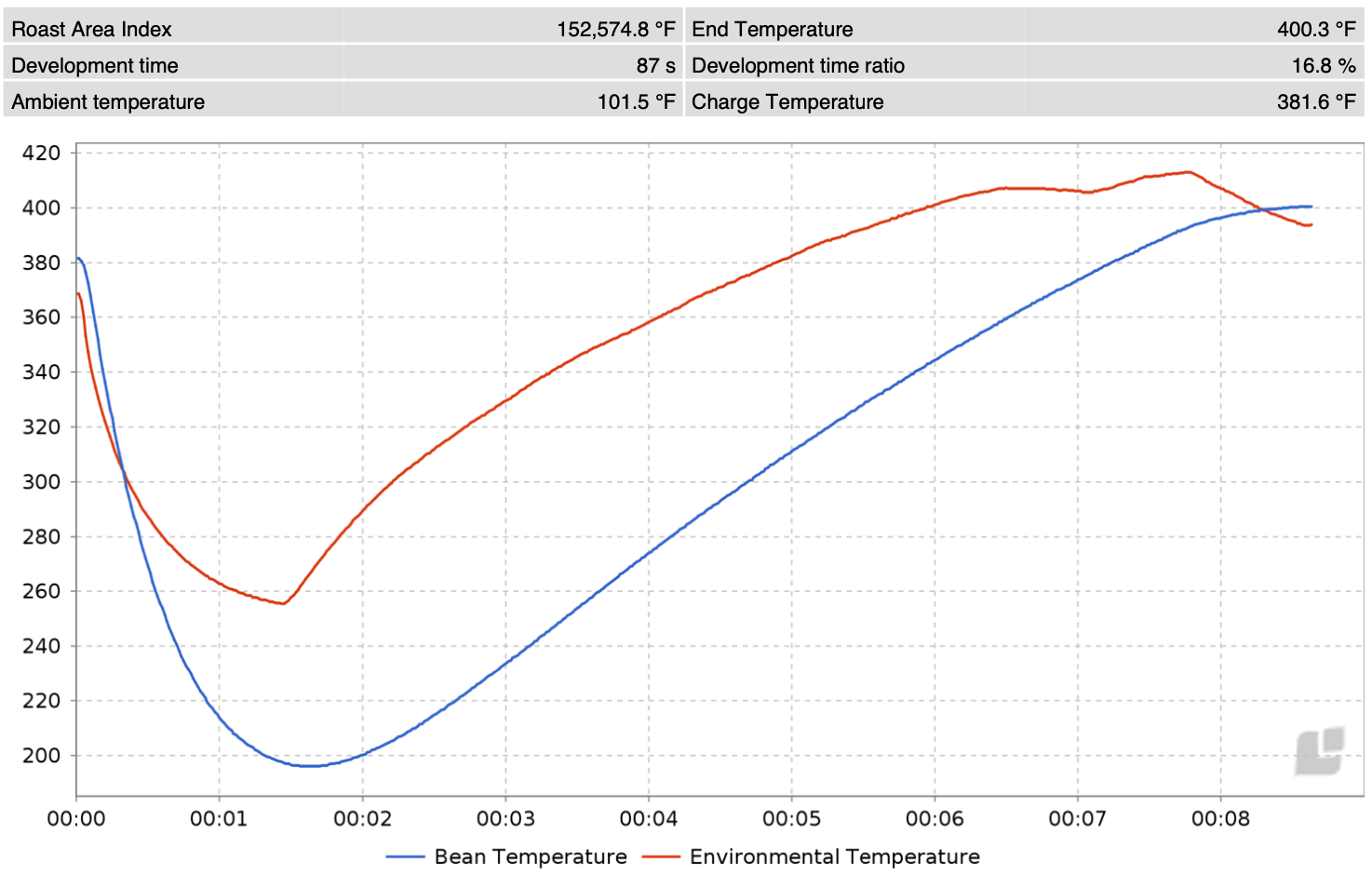
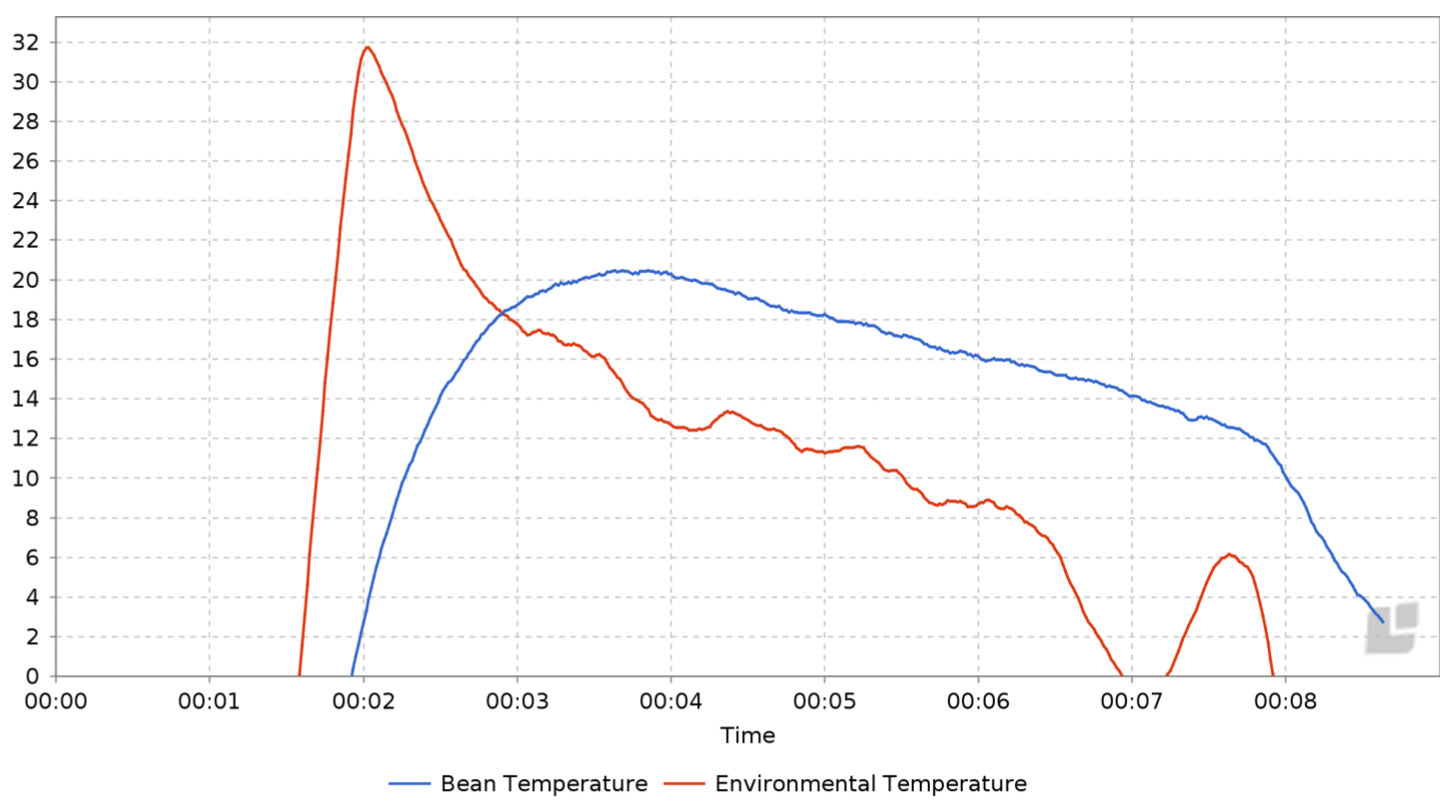
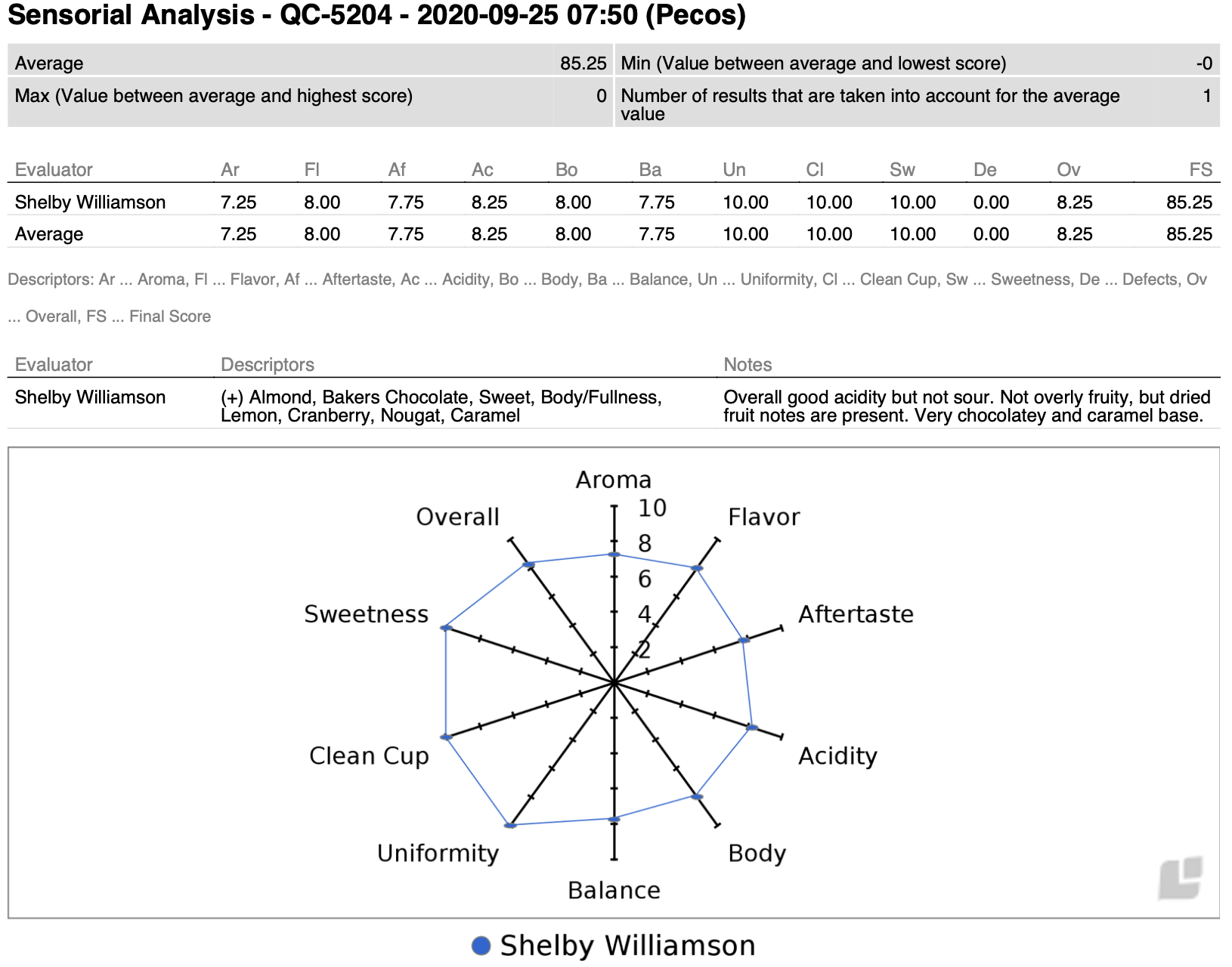
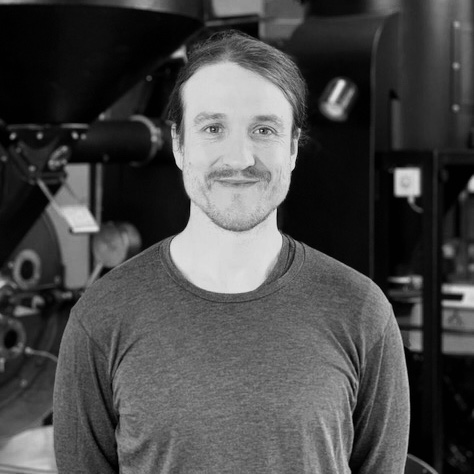
Roasting Expert: Garreth Druce
Company: The Barn
Country: Germany
Roasting Machine: Probat UG-22
- What was your goal with this coffee?
“Generally when I receive a new coffee to roast I already have some idea of how the coffee is going taste based on our evaluations when we decided to buy it so this coffee was a little bit different in that we only had one shot in our actual production roaster. The only production roaster we have is a UG-22 so I did one roast in the Ikawa just to get an idea of what was available in this coffee, like what it was gonna taste like.” Garreth was surprised as he told us: “with the density being quite high for a Brazilian coffee but also the water activity was quite low as well so I just wanted to be really gentle. The other thoughts I had going into the roast, as well with it being a Brazilian coffee, and after cupping the Ikawa roast, was I noticed it had a really nice sweetness, like really nice fruit tones, and I wanted to highlight those. So, my idea was to just extend the maillard phase just slightly more than what I would on say a roast from ethiopia or kenya just to really highlight that sweetness.”
- What was your roasting process?
“The beginning of the roast went pretty well. The other thing I tweaked for this roast was adjusting my drum rpm because usually we roast 15 kilos and up to 22 kilo batches in that machine and we have a drum rpm of around 46 to 50, 52. I think for this roast it was 39 because being such a low batch size we obviously need less turbulence in the drum. I didn’t want to increase too much turbulence because then the conductive properties of the drum would be lost and it would become more of a convective environment. Overall my approach wasn’t too dissimilar to how I would roast a coffee from Brazil. Coming into first crack maybe a little bit hot but that’s why we see the crash just after crack but although tailing off towards the end of the roast it looks like it’s flicked. I’m not too fussed about that it hadn’t flipped really hard. The other thing that may be interesting for some people is that the roast value was around 60 and the ground was 78.”
- How would you serve this coffee?
“What I would be looking to use this coffee for would not be so much a blend, at The Barn we don’t actually blend any coffee so we only work with single origin coffees. I would definitely see this as a candidate as like a really solid Brazilian single origin espresso because it had really nice fruit notes, very nice sweetness and overall it was just the coffee that had really nice balance and really nice flavor and I really enjoyed it.”
Coffee roasting temperature chart (roast profile) for a Brazilian coffee from Garreth Druce at The Barn:
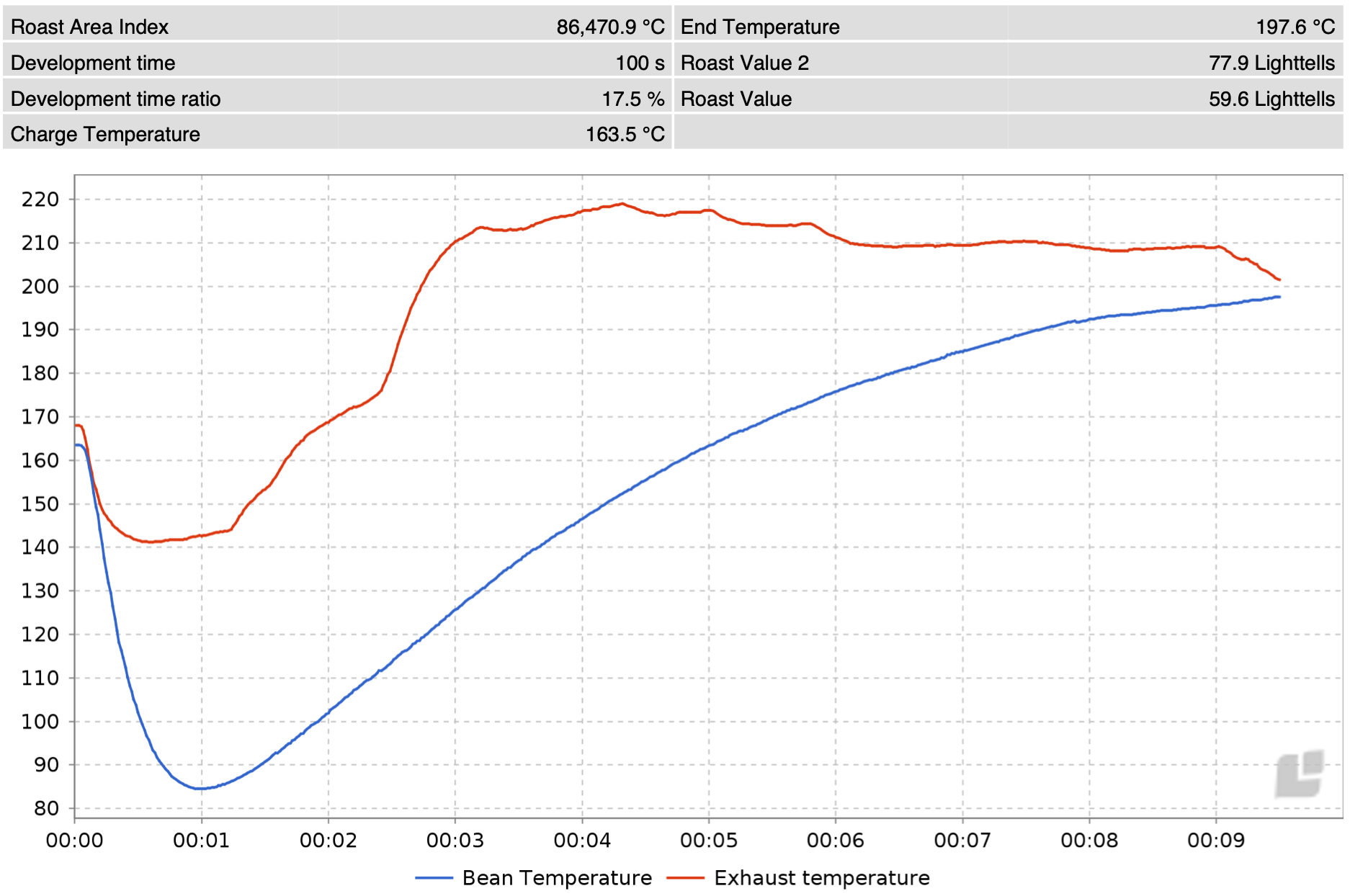

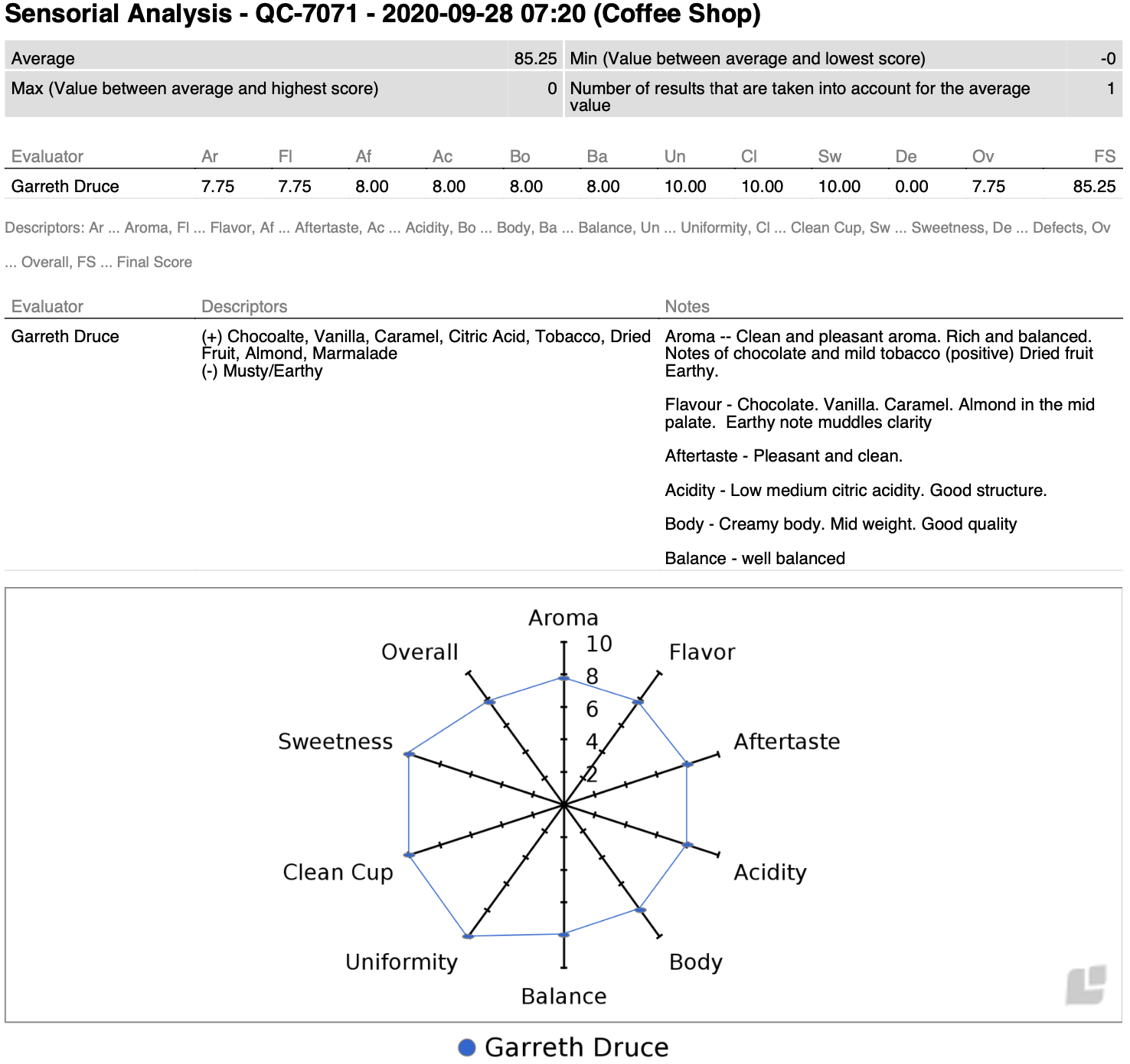
If you would like a demonstration of Cropster in action or to learn more about what we offer, please click here. To watch the webinar this article was created from and hear the roasters directly, click here.
